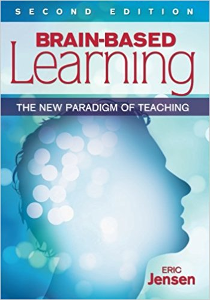Brain-Based Learning

This book is a pop-science book aimed at applying neuroscience to instructional design and teaching.
My reading notes
Part 1: Fundamentals of brain-based learning
Ch. 1: What is brain-based learning?
Ch. 2: How your student’s brain learns
Ch. 3: Brain dominance in learning
Ch. 4: Rhythms of the brain
Part 2: Physiological effects on learning
Ch. 5: Biological differences in learning
Ch. 6: The impact of physical movement on the brain
Ch. 7: Stress and threat
Part 3: Sensory contributions to learning
Ch. 8: The role of sight in learning
Ch. 9: The role of touch in learning
Ch. 10: The role of taste in learning
Ch. 11: The roles of smell and acoustics in learning
Ch. 12: The role of emotions in learning
Part 4: Neuroscientific perspective on teaching and learning
Ch. 13: Teacher communication
Ch. 14: The non-conscious learning climate
Ch. 15: Motivation and rewards
Ch. 16: Attention and survival value
Ch. 17: Teaching how to think
Ch. 18: Memory and creating patterns of meaning
Ch. 19: Meaning making
Part 5: Brain-compatible classrooms
Ch. 20: Enriching the brain
Ch. 21: Curriculum in brain-compatible classroom
Ch. 22: Assessment with the brain in mind
Ch. 23: Brain-based reform